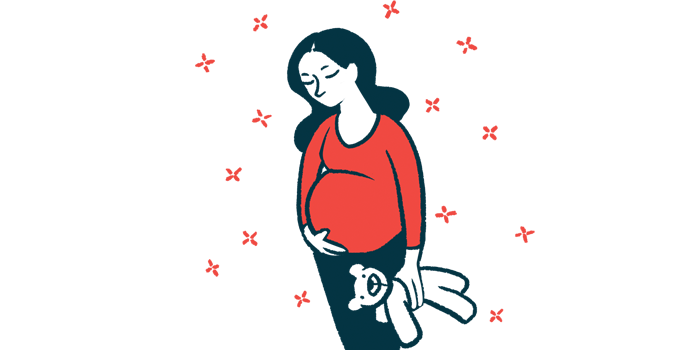Echocardiogram in pregnancy may find pulmonary hypertension early
Predictive value seen in artery stiffness in 2nd and, especially, 3rd trimester

An echocardiogram during pregnancy, particularly at the third trimester, may help in predicting a risk of persistent pulmonary hypertension of the newborn (PPHN), a study from China suggests.
Echocardiograms, which measure heart function using sound waves, are noninvasive and widely used in diagnosing pulmonary hypertension (PH) in people, but not in a developing fetus.
A pulmonary artery stiffness (PAS) cutoff value of 37.40 KHz/s in the third trimester was found to predict pulmonary hypertension in newborns with an accuracy higher than 90%.
“To the best of our knowledge, this is the first report on the perinatal [around the time of birth] changes in pulmonary artery stiffness and its predictive value for persistent pulmonary hypertension of the newborn,” the scientists wrote, adding that artery stiffness in a fetus at that stage was a “strong predictor” of the condition.
Echocardiograms used to diagnose pulmonary hypertension in newborns
The study, “Fetal pulmonary artery stiffness is a strong predictor of persistent pulmonary hypertension of the newborn – An echocardiographic study,” was published in the European Journal of Obstetrics & Gynecology and Reproductive Biology.
Before birth, a baby gets oxygen and nutrients from the mother through the umbilical cord, which also removes waste. Clamping the umbilical cord at birth requires a rapid switch to pulmonary gas exchange. For pulmonary blood flow to increase, pulmonary vascular resistance — the resistance of lung blood vessels to blood flow — must rapidly decrease.
In PPHN, the pulmonary arteries don’t open widely enough, limiting oxygen and blood flow.
Pulmonary artery stiffness, which is measured during an echocardiogram, is a strong predictor of poor outcomes in pulmonary hypertension (PH) patients, and is considered a “gold standard” for diagnosing PH in infants, the researchers noted. However, whether measuring it during pregnancy can predict a risk of PPHN remains unknown.
Researchers with Tongji University in Shanghai evaluated data from pregnant women followed at their maternal-fetal medical center from July 2017 to January 2023.
Data was reviewed from echocardiograms conducted over the second and third trimesters of pregnancy for 1,325 fetuses, as well as within 14 days after their birth. Six fetuses, as newborns, were diagnosed with PPHN; the incidence was 4.53 per 1,000 live births.
PAS measures in pregnancy show good accuracy, sensitivity, and specificity
PAS was calculated as the ratio of a measaure called maximal frequency shift (MFS) to pulmonary artery flow acceleration time (PAAT). PAAT assesses the time from the start of blood pumping from the heart’s right ventricle to the peak velocity of pulmonary artery flow.
Results showed that pulmonary artery stiffness decreased slightly with age, whereas in fetuses with PH, PAAT measures prolonged from the second to the third trimester, and were shorter again after birth.
PAS correlated significantly with mean pulmonary artery pressure — the pressure in the vessels supplying the lungs with blood — in both normal and PPHN fetuses. No correlation was seen between PAS and gestational age, or how far along in weeks a pregnancy has advanced since the mother’s last menstrual period.
Measuring PAS was deemed a good predictor of PPHN risk, with a slightly better performance when measured in the third trimester of pregnancy. Here, a PAS cutoff value of 37.40 KHz/s could predict PPHN with an accuracy of 92.3%, a sensitivity of 100%, and a specificity of 91.5%. Sensitivity refers to how well a test correctly identifies those with a given disease, whereas specificity refers to correctly identifying those without it.
“Our study showed that pulmonary artery stiffness in fetuses with pulmonary hypertension was significant[ly] greater than normal fetuses, and even greater after delivery,” the researchers concluded.
Using noninvasive echography to determine such stiffness “give us a new idea about the development state of pulmonary vascular bed in fetuses and a simple and powerful tool for prediction of persistent pulmonary hypertension of the newborn,” they added.
Among study limitations, the scientists mentioned the small number of PPHN cases found in these babies before birth, so that the “validity of pulmonary artery stiffness in predicting persistent pulmonary hypertension of the newborn may not be accurate enough.”








